Light painting is a fun, creative and relatively inexpensive photographic activity that allows you to add something personal and unique to your photos, as well as help you learn more about your camera’s settings.
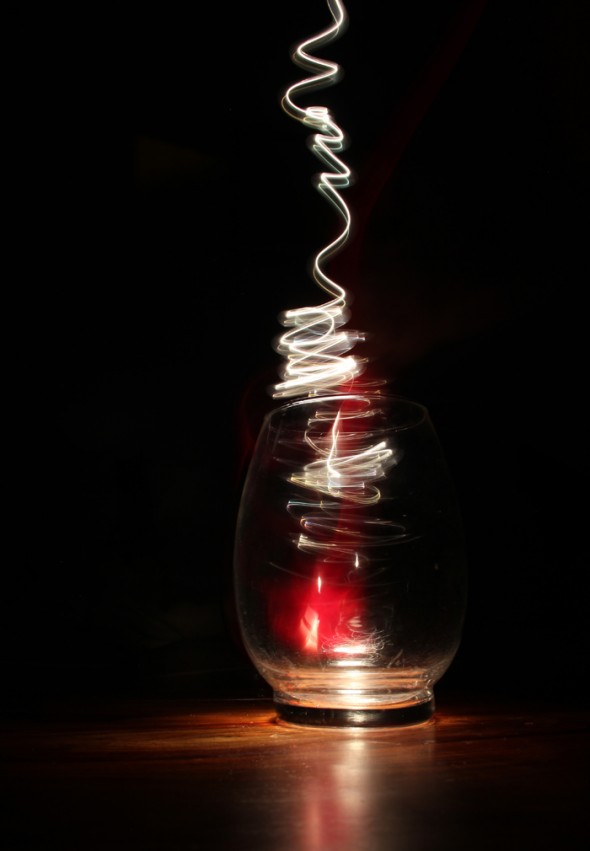
What is light painting and how is it captured?
Light painting is a photographic technique that involves the movement of light whilst the cameras shutter is open. In order to capture the moving light source you will need to set your camera to a long exposure, this can be anything from 10 seconds to several minutes depending on how much light you want to expose. Light painting is best done in the dark and somewhere fairly secluded so that you can keep in control of your image and the light you want exposed to the sensor.
Equipment
- A sturdy tripod or solid surface: If you’re using a long exposure then you will need to keep the camera still to avoid any blur, so a tripod is a must.
- A camera that allows you to set your shutter speed. Not all light painting activities require a lengthy exposure, anything from 10-20 seconds will be enough to get you started.
- Light painting tools: Glow stick, torch, matches, sparklers, a flashgun (to light up your scene), your phone, etc.
- Wireless remote(recommended): A remote enables you to release the shutter and keep it open for as long as the camera will allow without having to hold down the button yourself. Remember to set your camera to “Bulb” so that you have full control over the exposure.
- A flashgun: This isn’t essential and something I didn’t need to use myself but if you have one it can be used to light up or freeze a particular object or scene before starting your light painting.
The good thing about painting with light is there are no rules and experimenting with the different set-ups is all part of the fun. Of course, if you’re using a digital camera you can instantly review your shots and tweak your settings if your images are coming out over or under exposed. If you’re new to light-painting, here are a few basic guidelines to get you going:
Camera settings
- Aperture: You can use anything from a large aperture (small f-number) at f/4 to a small aperture (large f-number) at f/22. As long as you stop down enough so that your point of interest is in focus and sharp then that is all that matters.
- Shutter speed: The shutter speed depends on your location, the type of effect you are going for and how much light is around you – taking into consideration any ambient light too. If you’re in a dark room experimenting with an object then 10-15 seconds is usually fine to start with.
- ISO: Use the lowest ISO setting possible to avoid grain (noise) creeping into your shot.
- Focusing: Set the lens to manual focus and focus by twisting the focus ring at the end of your lens. Because you will be shooting in the dark if you set the camera to autofocus it will struggle to focus and the camera will try to refocus each time you press the shutter button.
Setting up and taking the photo
- Position your camera or object to where you want it – try experimenting with a variety of perspectives
- Attach your camera to your tripod and set it to the right height
- Manual focus on the subject whilst the lights in your house are switched on. Alternatively, if you’re shooting outside then you can use your torch instead
- Once the focus has been set, adjust the shutter speed and turn off the lights
- Release the shutter, either by using a remote or by manually pressing the shutter button
- Once the shutter has been released (listen out for the click sound) quickly get into position and then turn on your light source (EG. torch, glowsticks) and begin painting
TIP: It is best to get into position before you expose your light source, otherwise you will capture a trail of light leading up to your object
Different types of light painting
There are many different ways to paint with light. Here are few of the different techniques and tools we’ve tried…
Light-painting objects indoors
I started with using an object inside my house as this allowed me to have full control over my environment and the light source. As it was Halloween, I used a pumpkin to practice on but you can use something that requires less work such as a chair, guitar, lamp, or even a family member.
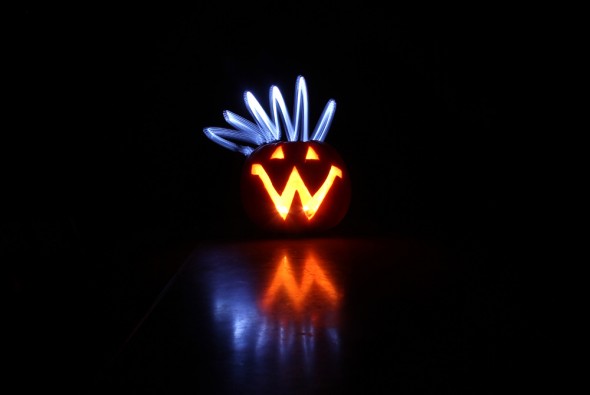
Light source: candles inside the pumpkin & an LED torch for the hair. Camera settings & equipment: Canon EOS 550D & Canon 18-135mm lens, Canon RC-6 Remote, tripod, f-stop f/8, exposure time 15 sec, ISO 100, focal length 19mm, no flash
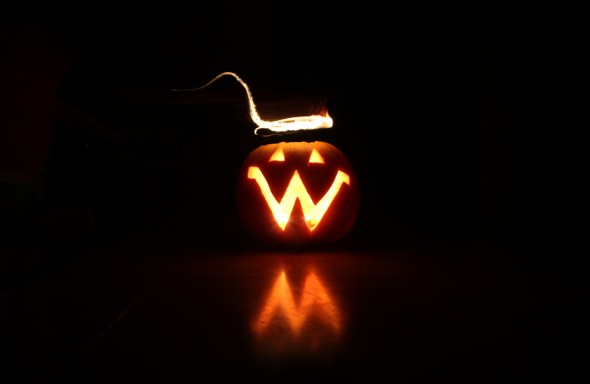
Light source: candles inside the pumpkin and a couple of lit matches. Camera settings & equipment: Canon EOS 550D & Canon 18-135mm lens, Canon RC-6 Remote, f-stop f/8, exposure time 15 sec, ISO 100, focal length 18mm, no flash
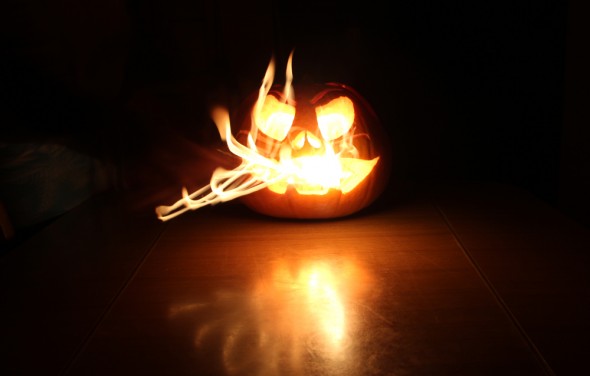
Light source: candles inside the pumpkin & a couple of lit matches to create the fire. Camera settings & equipment: Canon EOS 550D & Canon 18-135mm lens, Canon RC-6 Remote, f-stop f/8, exposure time 15 sec, ISO 100, focal length 24mm, no flash
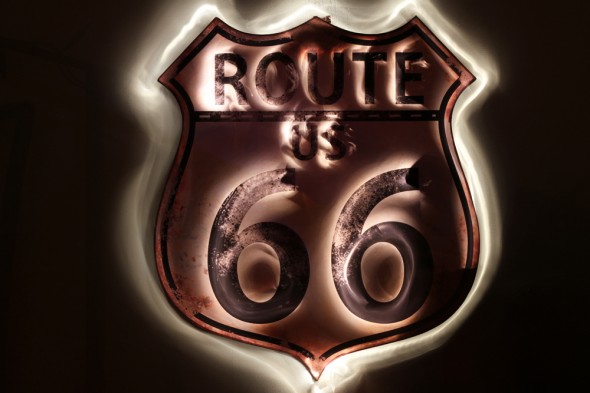
Drawing around a sign using a torch. Canon 50mm lens, Canon RC-6 Remote, a tripod, f/8, Exposure time: 104 seconds, ISO 100, no flash
In order to create this magical potion type effect I grabbed a few glow sticks and swirled them around inside the glass and continued to do so as I lifted them out of the vase to get a gradual, smooth effect. Afterwards I used a maglite torch to add the bright swirls.
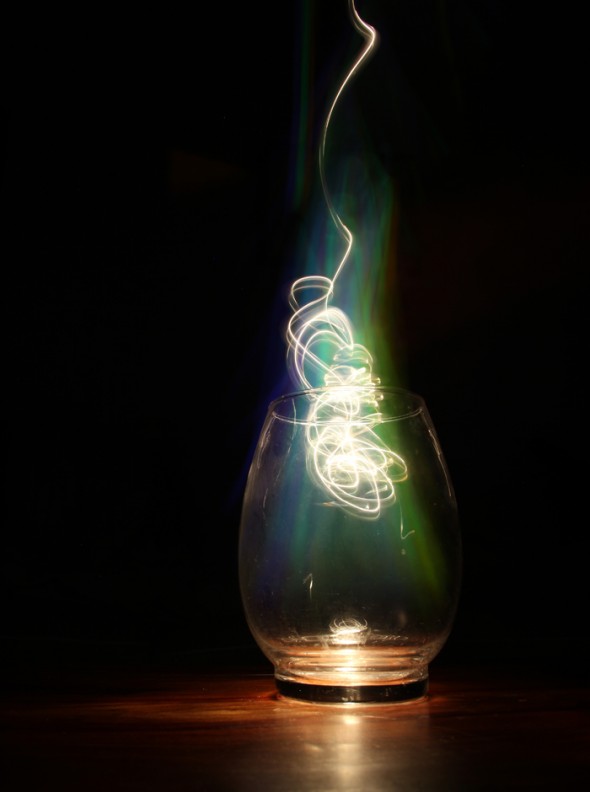
To show that the vase was resting on something and not floating in mid air I shone the torch towards the bottom of the vase for a few seconds before experimenting with the glow sticks.
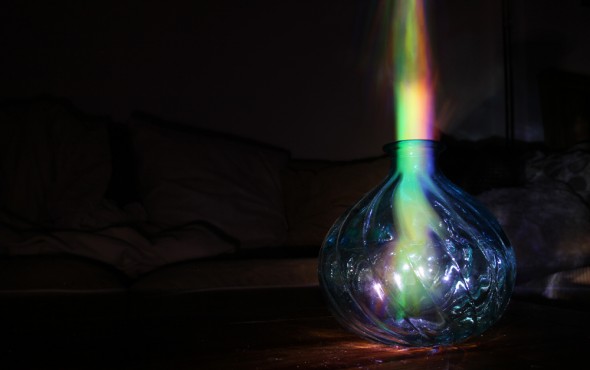
ISO 100, f/8, exposure time 35 seconds, no flash, Canon RC-6 Remote & a tripod
Using steel wire wool
Alex Bennett in our e-commerce team did some light painting of his own using wire wool, a bull clip and a some rope. He lit the wire wool, attached a bull clip to it and then swung it around using some string to create a spider, firework explosion effect.
Please note: this outdoor light painting technique should only be attempted by responsible adults and with full safety precautions in place (including but not limited to: protecting yourself by wearing gloves, safety goggles and long sleeves, as well as keeping a fire extinguisher to hand).
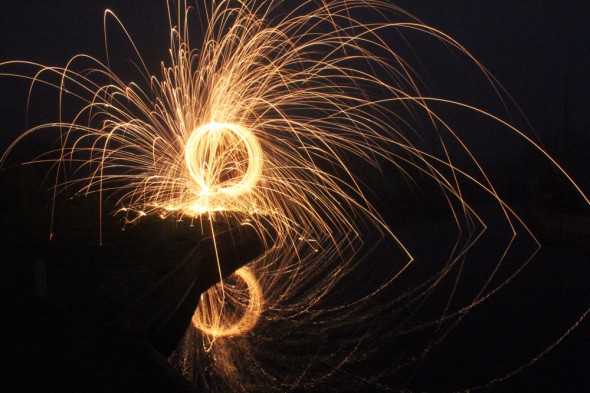
Equipment & settings: Canon 60D + 18-55mm lens, a tripod, f/22, ISO 6400, exposure time 122 seconds,
Creating your own scene
Before drawing any type of scene it helps knowing what you want to create first before releasing the shutter. For this shot I lit up the sofa first by shining the torch on it for a few seconds and then I nipped behind the sofa to draw my scene.
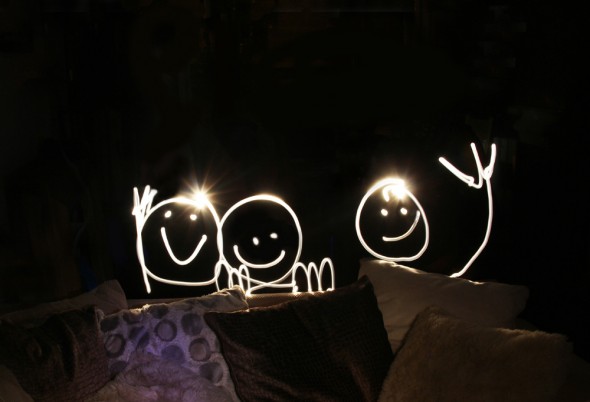
Camera & settings: Canon 550D + 18-135mm lens, Canon RC-6 Remote, a tripodISO 100, f/8, 26mm, 100 second exposure, no flash
Alex Bennett talks us through his shot below:
This shot was taken just after midnight under a black cloudy sky, the 86 second exposure was just enough to capture the church in the glow from a nearby street lamp but not burn out the glow from the lamp in the far right. It only took about 15 seconds to walk a steady pace along the wall with the light, but as the light stick was much brighter than the surroundings I needed to use f/22 so the overall lighting was more evenly balanced.
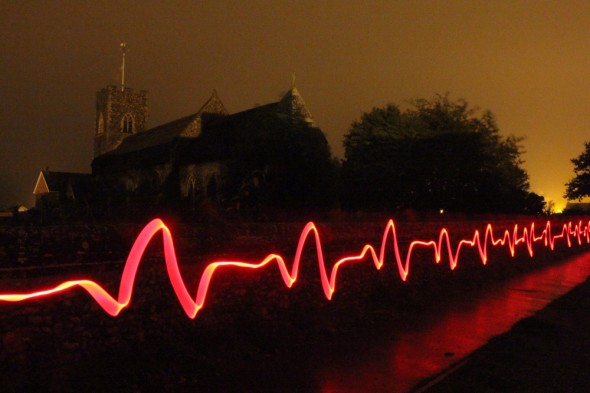
Camera & settings: Canon EOS 60D, 18-55mm, tripod, f/22, ISO 6400, exposure time 87 seconds, no flash
Drawing around your car using sparklers
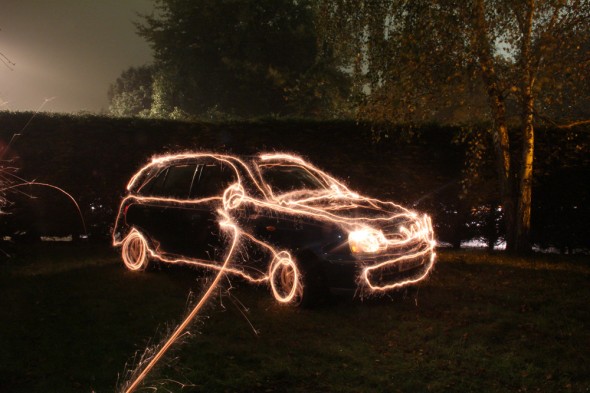
This is not what to do, remember to light the sparklers once you are in position!
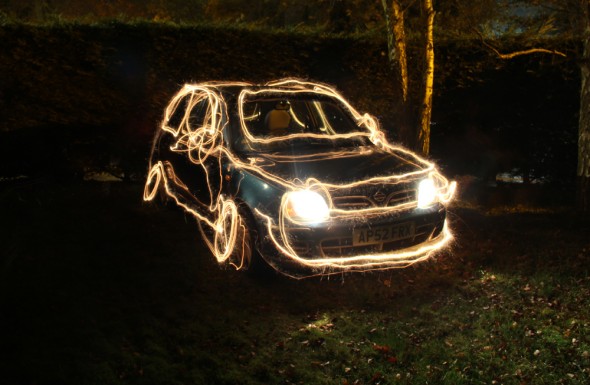
Camera & settings: Canon 550D + 18-135mm lens, a tripod, Canon RC-6 Remote, f/8, ISO 100, 274 second exposure, no flash
Long exposures at night
Using your natural surroundings is a great way to experiment with light painting without you yourself having to actually move or do anything. Instead of moving the light source yourself, look around and try using the available light. For instance, in this scene I have managed to paint with light using the London Eye and buildings nearby.
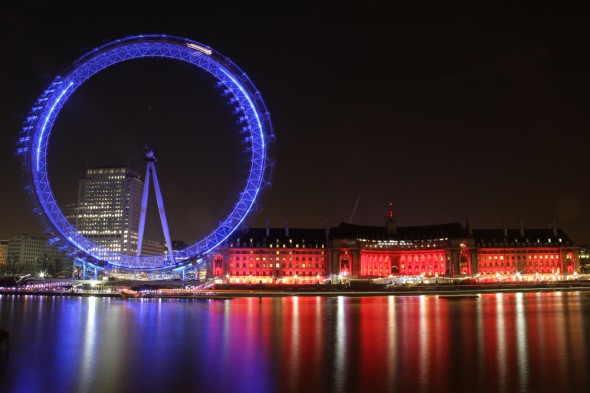
Camera settings & equipment: Canon EOS 550D & Canon 18-135mm lens, a tripod, f-stop f/11, exposure time 69 sec, ISO 100, focal length 18mm, no flash
The light you see punching through the trees are the outside lights of a local pub. By using a long exposure, Alex was able to create a spooky effect with lots of shadows.
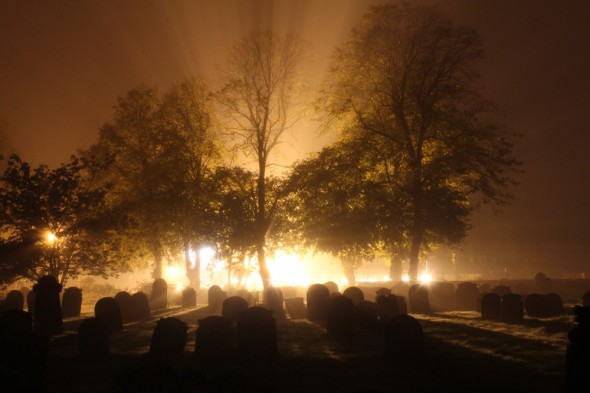
Taken by Alex Bennett. Equipment & settings: Canon 60D with 18-55mm lens, ISO 1000, 30 seconds, f/22, no flash, tripod
Light trails
The trails of light you see in the photo below are created by the moving traffic. The cars are dark enough and moving at just the right amount of speed so that they’re not physically present in the shot, but so you are able to capture their headlights and side lights when they pass by. To get the perfect shot it is all about timing, you may find that it takes a couple of attempts before getting a shot you are 100% happy with. Photographing light trails is really simple to do, the hardest part is finding an eye grabbing location, a unique perspective and enough cars passing by to create a big enough effect. To create the shot below I used a fairly small aperture (f/11) to ensure there was a large depth of field so that my background was in focus. Remember to turn off your flash as this might distract the drivers.
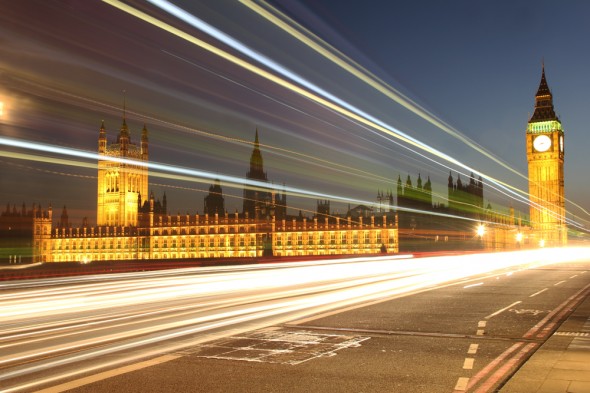
Camera settings: f-stop f/11, ISO 100, 26mm, exposure time 40 sec, no flash
Fair Rides
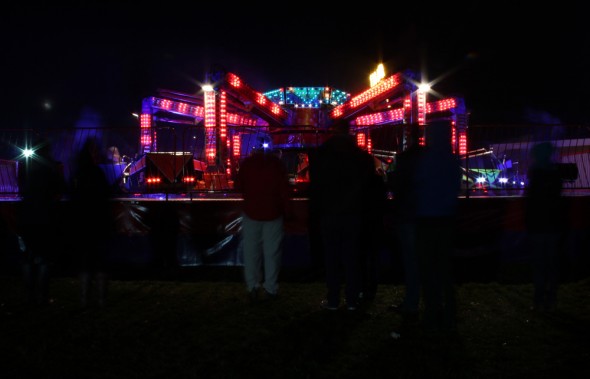
The ride stationary. ISO 100, f/22, 18mm focal length, no flash, exposure time: 12 seconds
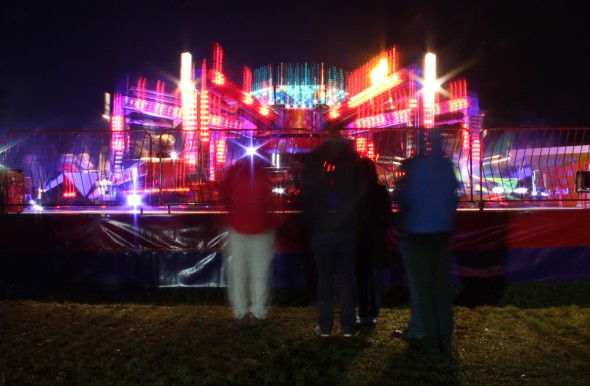
The ride beginning to move. ISO 100, f/22, 18mm focal length, no flash, exposure time: 52 seconds
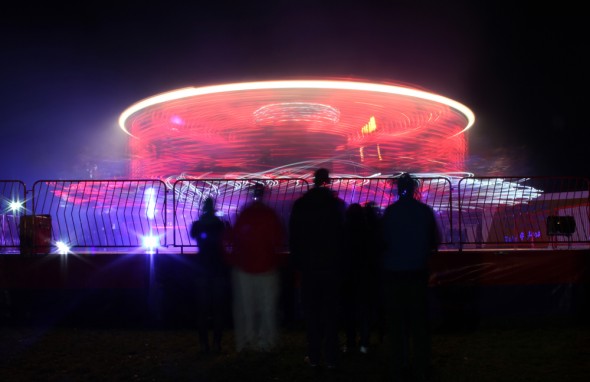
The ride in full swing. ISO 100, f/22, 21mm focal length, no flash, exposure time: 13 seconds
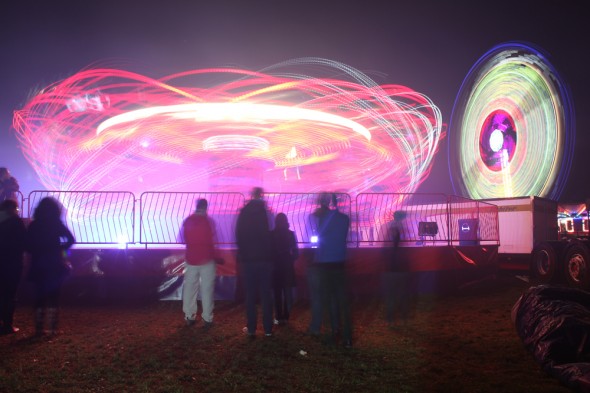
ISO 100, f/8, 18mm focal length, no flash, exposure time: 6 seconds
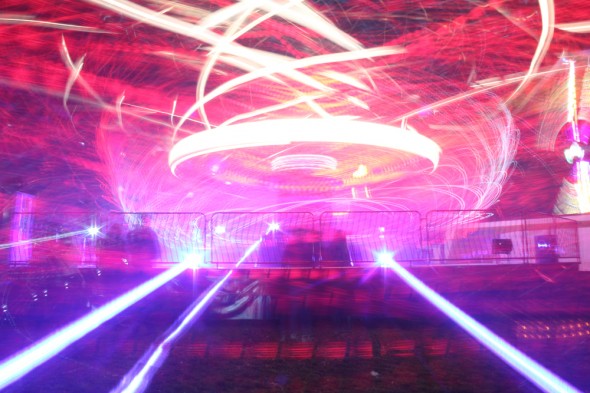
ISO 100, f/22, 18mm focal length, no flash, exposure time: 60 seconds
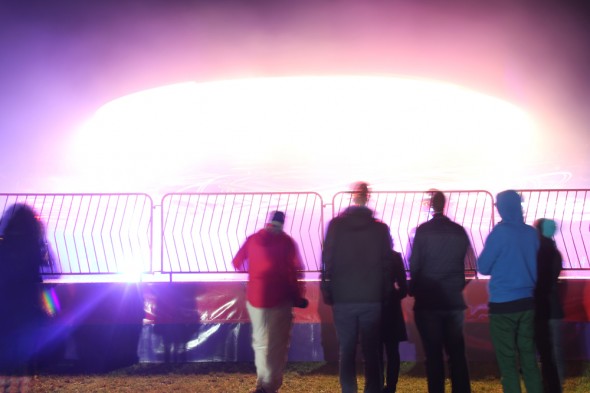
The shot above is a good example of keeping the shutter open for too long. As you can see it is overexposed.
Although you might think the bulbs are lit, they’re not, it’s simply been made to look that way by shining the torch on them.
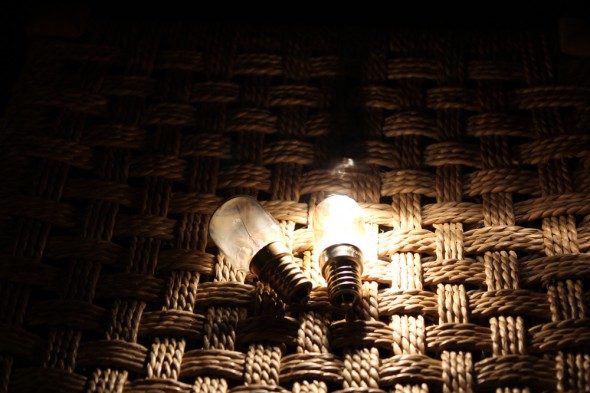
Taken by Alex Bennett. Equipment & Settings: Canon 60D + 18-55mm lens, ISO 100, 55mm, 15 second exposure, f/5.6, no flash, tripod
Free-form shooting
Below is an image of some Christmas lights fixed around the banister in my hall way. For this next technique you don’t need a tripod, nor do you need to move the light source. Set the shutter speed between 10- 15 seconds and then whilst the shutter is open move the camera in all directions, the result is a streaky, light trail effect.
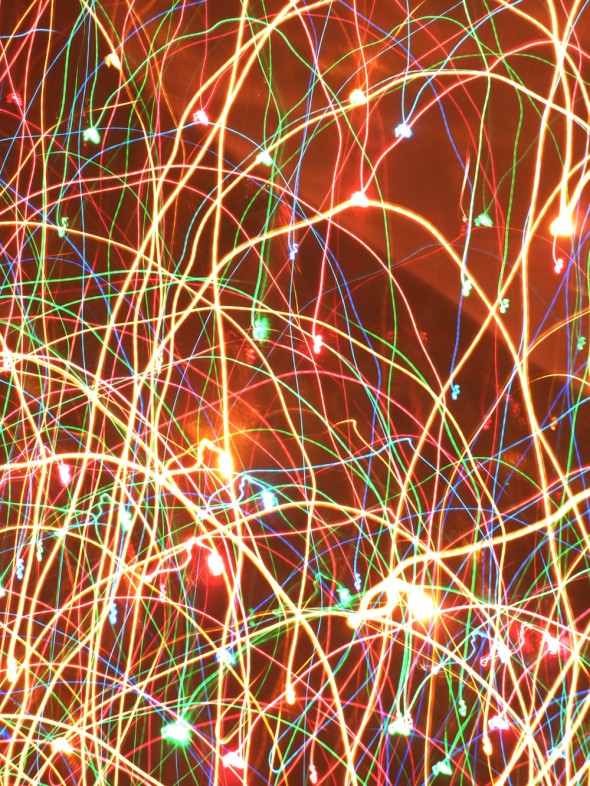
Captured using my Panasonic TZ7 compact camera. Settings: f/4.1, 15 second exposure, no flash, ISO 80, no tripod
Walking up stairs with an LED light stick
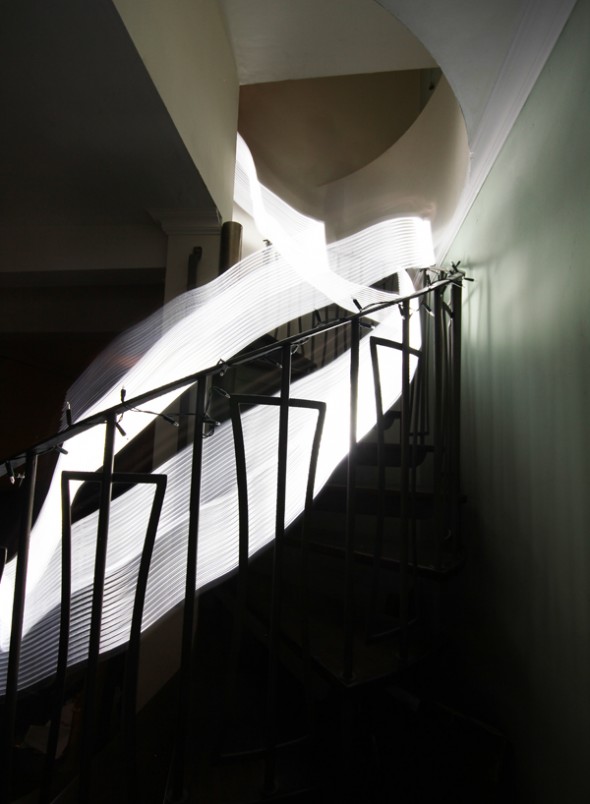
Equipment and settings: f/8, 39 seconds, no flash, ISO 100, Canon EOS 550D & 10-20mm Sigma lens, tripod, Canon RC-6 Remote
Light painting is a fascinating technique and a fun way to get the whole family involved without having to step into the cold. There are so many things you can do with light painting – the light source is your brush and the world is your canvas. If you’ve given light painting a go before or plan on doing so then we would like to see your creations. Please share any tips and techniques of your own in the comments below and add your images to our Google+,Facebook, Twitter or Flickr pages.

